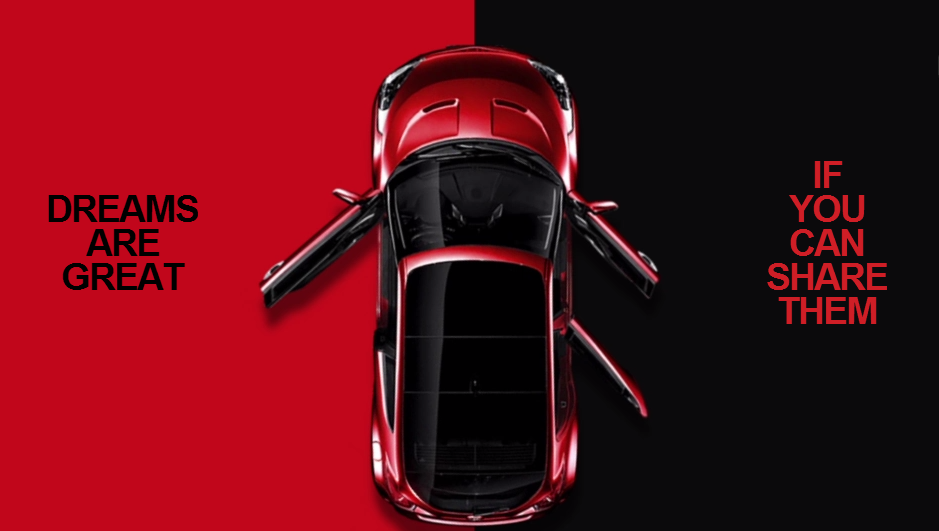Years ago, car buyers are largely won at the dealership and the dealership alone. This makes visual merchandising a powerful marketing tool for influencing purchase decisions.
Today, auto companies have found an equally compelling display area to showcase their masterpieces – the Internet. Marketers exploit the latest communication channels to cater to a more socially wire, and tech-empowered customers. Recent studies reveal that the automotive industry is the largest producer of online conversations. According to Econsultancy, 73% of new and used car buyers turn to online media for the most part of their research process.
Automotive buying behavior is, without a doubt, changing drastically in the age of digital and visual communication. With just a few clicks, potential car buyers can get all the critical information they need. And by the time they hit the showroom, trust that these customers have already done enough research on the car brand and model they want to purchase.
To get ahead in the automotive industry, visual content is an essential element of your marketing strategy. Here’s a roundup of some of the brilliant ways auto companies use visual content to stir engagement and attract more leads to their dealerships.

Ford’s Fiesta Movement
Medium used: Social Media
Ford needed to appeal to a generation of young drivers who were buying their car for the first time when it launched a social media contest named Fiesta Movement. Out of thousands of entries, 100 social “agents” were chosen to drive the Ford Fiesta free for one year and promote it in various social media sites. Winners also got free gas, insurance, and video cameras to record their personal reviews about their experiences with the car and share it with the rest of the online community.
The campaign proved to be a real hit, it was so successful that Ford’s revamping the campaign for its 2014 Ford Fiesta launch. When you visit the current site www.fiestamovement.com, you’ll notice that it features nice and big photos to engage its viewers.
Scott Monty, head of Ford’s Social Media team was quoted saying, “The best thing that companies can do is play an active part in these online communities—they can’t be seen as an advertising platform. You need to talk, listen, and engage. Monitor what’s going on. Just showing up and trying to push things down people’s throats won’t work, and they will object. It’s really just acting like a real human being, showing that there are real human beings behind a campaign.”
Nissan Cost of a Road Trip
Medium used: Infographic
A layout full of text can be disengaging and boring to read. It’s no surprise why infographics are so popular these days. According to an online expert, prior to the start of 2010 to the beginning of 2012, infographic search volumes have already increased by over 800% in just over 2 years.
Infographics provide an engaging visual element into your message which, when done well, can interpret complex data into a simple and easy to digest format. Nissan took advantage of these benefits when it created the Cost of a Road Trip infographic, which shows a cost comparison of cross-country road travel among eight car brands (one of which is Nissan Altima).
With simple graphics and a few lines of text, Nissan was able to relay the message that it has the most fuel efficient car model among its competitors.


Hyundai Veloster Website
Medium used: Website
Hyundai Veloster’s site engages its visitors with simple yet stunning animation that uses javascript and html5 to show users the different facets of its 3-door model. The parallax design gives the website an additional ‘wow’ factor, which further entices visitors to stay longer on the page and check out the feature highlighted each time they scroll down the page.
Volkswagen The Force
Medium: YouTube
Volkswagen uploaded its clever and fun commercial on YouTube prior to showing the ad on Super Bowl. The ad, which featured a young boy in a pint-sized Darth Vader costume and a short yet funny moment with his father, generated 1 million views on its first day online. The ad was seeded to various sites while tapping the right web influencers to shape the opinion of online viewers.
At present, the TV commercial has no doubt reached iconic status with over 57 million hits and still counting.
From product awareness and comparative research all the way to finalizing the purchase decision, digital channels are starting to dominate the consumer buying process. As online marketing leans towards visual content to engage and drive customers to action, it is imperative for marketers in the auto industry to start injecting visual communication as a crucial part of their strategy, and think of it as a vital piece of the sales puzzle.

